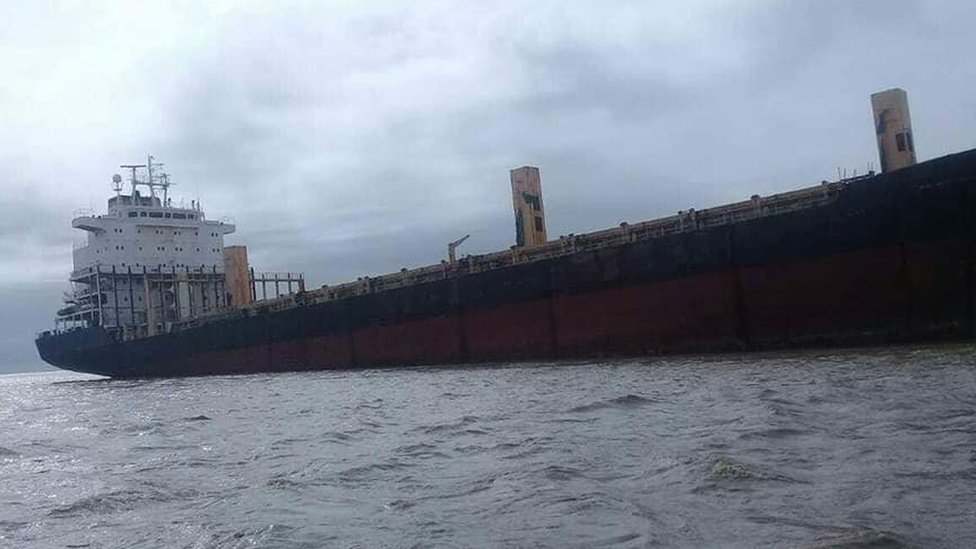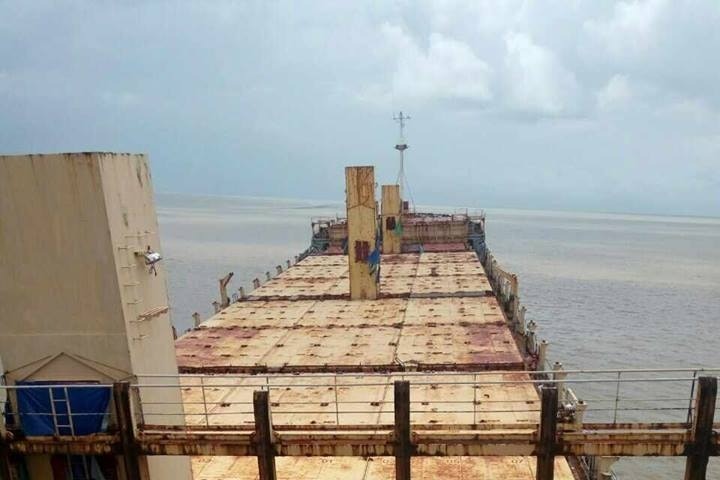The Real Story Behind the “Ghost Ship” Sam Ratulangi PB 1600: What Really Happened?
In August 2018, maritime authorities in Myanmar were stunned by a rare sight: a massive cargo ship appeared adrift near the country’s coast—completely abandoned, rusted, and without any crew or cargo on board. The ship, identified as Sam Ratulangi PB 1600, had last been seen nearly a decade earlier. Nicknamed a “ghost ship,” its sudden reappearance captured global media attention and fueled speculation. But the truth, while less mysterious, reveals an intriguing tale of ocean currents, shipbreaking, and an unexpected detour.
The Discovery of an Abandoned Vessel
Local fishermen were the first to spot the vessel near the mouth of the Sittoung River, approximately 11 kilometers off the coast of Yangon. When authorities boarded the vessel, they were met with an eerie silence. There were no signs of crew life, no cargo in the hold, and nothing in the ship’s logs to explain how it came to be there.
The ship was flying an Indonesian flag and was visibly corroded, showing signs of long-term exposure to the elements. Photos taken by the Myanmar Navy showed a rust-covered deck, deteriorating metal railings, and clutter that had been strewn about by the ocean breeze.

What Was the Sam Ratulangi PB 1600?
The Sam Ratulangi PB 1600 was a general cargo ship built in 2001 and registered in Indonesia. According to ship-tracking databases, its last recorded position was off the coast of Taiwan in 2009, after which it vanished from radar. The vessel had a deadweight tonnage of 26,500 tons and was designed for transporting bulk goods.
Its sudden reappearance in Myanmar nearly nine years later led to widespread confusion and intrigue. How could such a large vessel remain undetected for so long? Where had it been all this time?
Clues at the Bow: A Broken Tow
Upon inspection, Myanmar authorities discovered thick cables at the bow of the vessel. These cables were snapped—clear evidence that the ship had been under tow before becoming adrift. This detail changed the direction of the investigation.
Using radar tracking and marine surveillance, the Myanmar Navy traced the path of the ship and discovered a tugboat named Independence approximately 80 kilometers offshore. The tugboat was boarded, and its 13-member Indonesian crew was questioned.
The Tugboat’s Testimony
The crew of Independence explained that they had been towing the Sam Ratulangi PB 1600 to Bangladesh, where the vessel was scheduled to be scrapped in the port city of Chittagong. According to the crew, the operation began around August 13, 2018.
However, while navigating the rough waters south of the Yangon River, the tug and the cargo ship encountered sudden bad weather. The high waves and strong winds caused the tow cables to break. With the cables snapped and conditions too dangerous to attempt reconnection, the crew made the decision to abandon the operation. The cargo ship, now free, began drifting and eventually made its way into Myanmar’s territorial waters.
Was the Crew at Fault?
The tugboat crew admitted they did not report the loss of the tow to authorities, which raised questions about maritime protocol. However, no criminal activity was suspected. The decision to abandon the vessel was considered a response to unsafe sea conditions. Myanmar’s navy detained the crew temporarily for questioning and further investigation, while taking control of the abandoned freighter to prevent it from becoming a navigational hazard.
What About the “Five Curious Fishermen”?
Initial media reports stated that five fishermen were found on board the vessel when it was first discovered. However, this appears to have been a misunderstanding. The fishermen were actually the first to report the vessel’s presence to the authorities—they were not found onboard, but nearby in their own fishing boat. No civilians were discovered aboard the Sam Ratulangi PB 1600.
Why the Confusion?
The story gained traction quickly across international news outlets, with many calling the vessel a “ghost ship.” The idea of a massive cargo ship reappearing without explanation evoked themes from maritime legends. However, as the investigation unfolded, it became clear that the vessel had not vanished due to anything mysterious or supernatural—it was simply a case of poor weather, broken cables, and an incomplete towing operation.
The Bigger Picture: Shipbreaking and Sea Risks
The incident shed light on the global shipbreaking industry, where aging vessels are towed long distances to ports in countries like Bangladesh, India, or Pakistan to be dismantled. These operations are often conducted with minimal oversight and can pose environmental and safety risks.
The Sam Ratulangi PB 1600 was headed to one such scrapyard when the tow failed. Without adequate backup plans or emergency communication protocols, such incidents can easily lead to international confusion or even maritime accidents.

Lessons Learned
This case highlights several important issues:
- The need for improved maritime safety standards, especially during the towing of large vessels.
- The importance of communication and coordination with local and international authorities when operations go awry.
- The global implications of the shipbreaking trade, which continues to rely on risky transport routes and often informal working conditions.
Conclusion
While the Sam Ratulangi PB 1600 was briefly branded a ghost ship, the reality was more grounded in logistics and maritime protocol than mystery. The ship had been lost during a routine towing operation due to inclement weather, and the failure to report its abandonment led to speculation. Thanks to modern radar systems and a timely investigation, authorities were able to reconstruct the vessel’s recent history and resolve the case.
The incident serves as a reminder that the ocean still holds its challenges, and without careful planning and transparency, even routine operations can result in confusion and global headlines.
